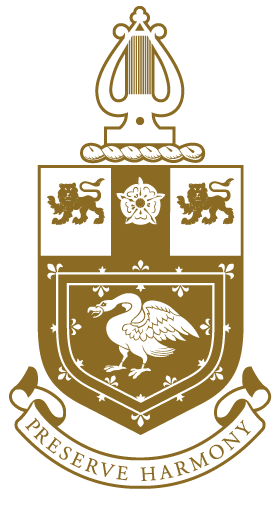Livery Companies
The City of London website describes the City of London Livery Companies as follows:
“The livery companies and the City of London have grown up together. They share common goals and since the earliest beginnings of the City have both been strong and active in its support. The livery companies are integral to the City’s governance: each year liverymen elect the Sheriffs of the City of London, endorse the election of the Lord Mayor and play a prominent part in major events.
Today, there are more than 100 liveries, and though trading conditions changed, since their inception, their work is as pertinent as it always has been. Different in size, structure and interests they share the same ethos: supporting trade, education, charity and fellowship, working in the best interests of the communities in which they operate. The charitable dimension of their work now amounts to over £40m each year.
Origins
Some guilds can trace their origins back to the 12th century, with the earliest charter still in existence being granted to the Weavers’ Company in 1155.
Those working in the same craft lived and work near each other, grouping together to regulate competition within their trade and maintain high standards. The early London guilds benefited their members and customers alike, controlling the manufacture and selling of most goods and services in the Square Mile.
As the guilds became more established, many set up their headquarters in large houses or Halls. As well as a meeting place, these became the venue for settling trade or domestic disputes. London street-names today still bear witness to areas where individual trades gathered and flourished.
When some guilds introduced their own distinctive clothing and regalia – or livery – to distinguish their members from those in other guilds, they soon became known as livery companies. The peak period for the formation of guilds was the 14th century when many received charters or ordinances. In 1515 there were 48 companies and the Lord Mayor established an order of precedence for them, finally ending many years of dispute.
After the 17th century, the livery companies suffered a series of setbacks. With their powers and practices restricted to the Square Mile, most were unable to compete with cheaper traders springing up outside its boundaries, while costly wars and political intrigues saw first Tudor and then Stuart monarchs levying hefty charges on the companies. The Industrial Revolution only added to their problems – yet stimulated the changes that were to save them.
Revival and modern relevance
As well as broadening their horizons to include new skills, the livery companies became prominent supporters of industry through research funds, excellence awards, sponsorships and other carefully targeted trade support.
From their earliest days, the companies emphasised the importance of good training. From the 1870s, this role was extended to include many forms of technical and other education, simultaneously supporting new industries and training young people to work in them. Founded in 1878, the City & Guilds Institute was a notable outcome, still prominent in vocational education today and actively supported by the livery companies.
The early guilds were duty-bound to care for their members in sickness and old age. Many of today’s companies still support almshouses throughout the country and maintain their other historical charities, while also broadening their charitable giving into many other areas of modern life, at home and abroad.
Livery companies within the Square Mile cover a wide range of occupations. Among some of the most recently formed are those for World Traders, Hackney Carriage Drivers, Tax Advisers.
Links with the City of London
All livery companies come under an element of control by the City of London’s Court of Aldermen. To become a new company, a group of people (usually numbering at least 100) must satisfy the Court that they have the resources and willingness to continue their association indefinitely, having already been long and well established. In addition to strong ties with the Square Mile, the potential new Company must have a significant number of members engaged in its particular trade, profession or craft, which must not overlap or clash with that of an existing guild.
Liverymen still play a pivotal role in the election of the Lord Mayor.
In 1385, a regulation was introduced requiring each Lord Mayor to have previously served as a Sheriff and, until 1742, to be a member of one of the 12 senior livery companies (the Great Twelve). Today, each Lord Mayor will still belong to one of the City livery companies, and be supported by their fellow liverymen in Common Hall at the end of September each year.
The Lord Mayor will also be an Alderman (literally, elder man), whose Court oversees the creation and conduct of the livery companies. Aldermen are elected by the Square Mile’s 25 Wards. The City’s franchise gives voting rights to a wide representation of organisations within the Square Mile enabling nominees or representatives of livery companies occupying premises there to be voters.
The livery companies also play a prominent role in many great occasions. Each year’s United Guilds’ Service in St Paul’s sees the livery companies, City of London and church joining together for a great ceremonial event, while the Lord Mayor’s Show features spectacular displays by many livery companies, particularly those with close links to the new Lord Mayor and the two Sheriffs.
The livery companies and the City of London have enjoyed a long, close and extremely effective working partnership, sharing objectives, supporting excellence and together promoting the Square Mile. This partnership is fostered through a dedicated committee, the Livery Committee, which strengthens these ties, as well as constantly seeking new ways to enhance joint initiatives for the future.
Livery Companies of the City of London is a website hosted by the Livery Committee, and is primarily intended for the members of the Livery Companies, and their Clerks. Here you can find out more about the Livery Committee and its work.”

